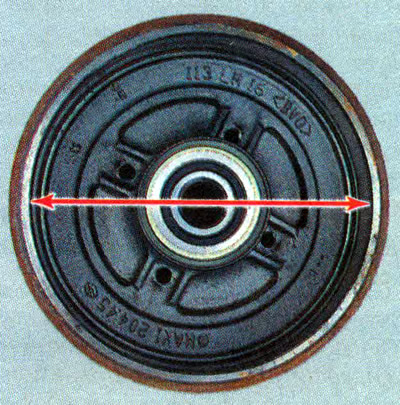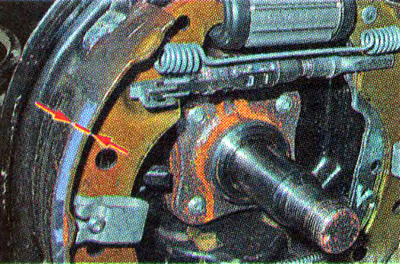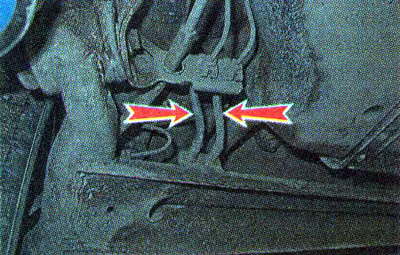Execution sequence
1. Remove the brake drum (see «Rear brake drums - replacement»).
Warning! To prevent the pistons from falling out of the working brake cylinder, do not press the brake pedal with the brake drum removed.
2. Inspecting the working surface of the drum, we make sure that there are no cracks or deep grooves on it.
3. With a caliper we measure the inner diameter of the drum, which should be no more than 204.45 mm.

Comment. With significant wear of the drum, a shoulder forms on the outer edge of its working surface, which can interfere with accurate measurements. In this case, to perform the measurement, reduce the shoulder with a round file.
Warning! Damaged drum or worn to the maximum permissible diameter (cm. «Reference data», tab. 13.1) needs to be replaced. In this case, both brake drums must be replaced.
4. Visually determine the condition of the friction linings of the brake pads and measure their thickness at the point of greatest wear.

Comment. When measuring with a caliper, take into account the thickness of the pad base (measure the thickness of the base and subtract this value from the resulting value).
Warning! If the thickness of one of the linings is less than the permissible value, we replace all four brake pads of the right and left wheels (see «Rear brake pads - replacement»).
Comment. Before installing the brake drum, we process its working surface and pad linings with a special brake cleaner.
5. Install the brake drum in reverse order.
6. Similarly, we check the rear brake mechanism of the other wheel.
7. Check the condition of the rear brake hoses (see above, «Checking the drive of the service brake system»).

Warning! Damaged hoses can burst and need to be replaced (see «Brake hoses - replacement»).
8. After checking, press the brake pedal several times to bring the pads to the brake drum.
9. Adjust the parking brake (see «Parking brake - adjustment»).
